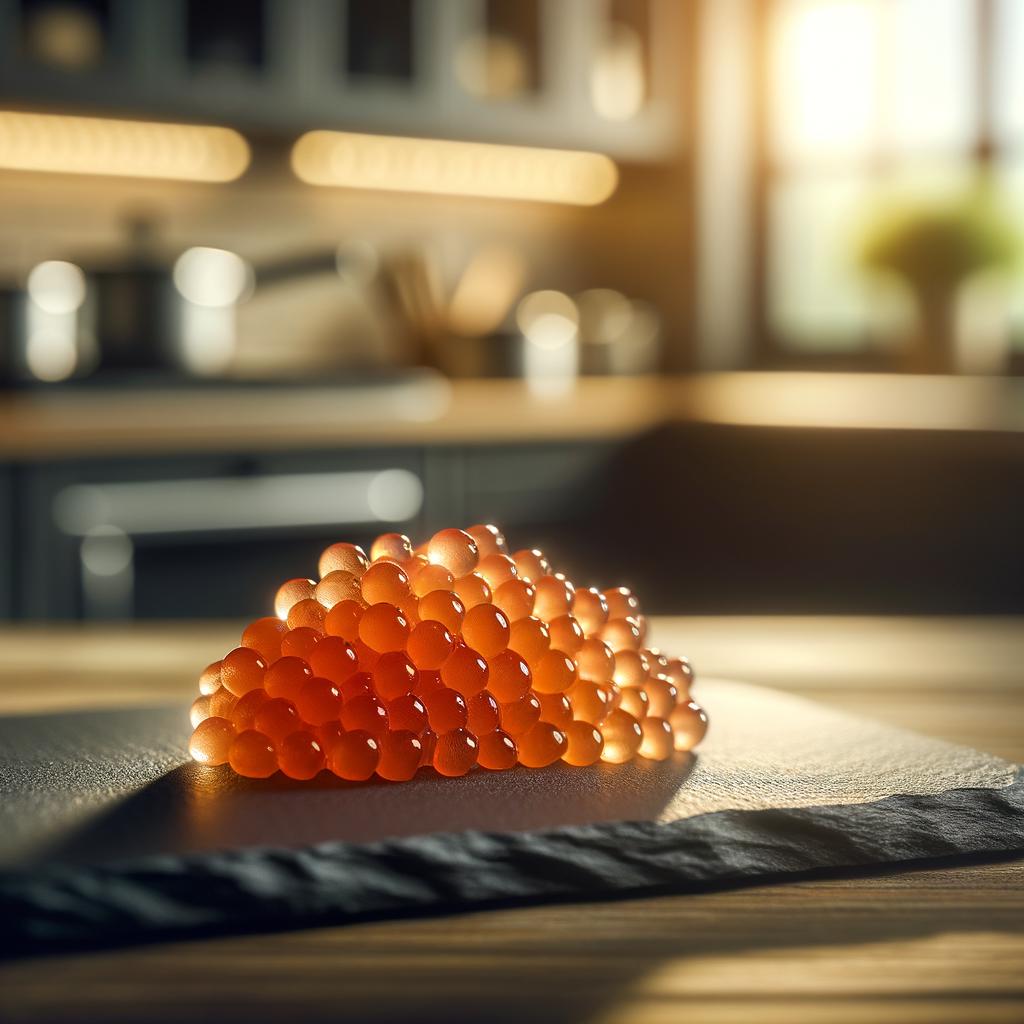Fish Roe

Description Fish roe, often referred to as the "jewels of the sea," is the fully ripe internal egg masses in the ovaries of fish and certain marine animals. These tiny orbs can range in color from vibrant orange to a deep, lustrous black, depending on the species from which they are harvested. The texture is a unique juxtaposition of delicacy and resilience, with each bead providing a satisfying pop when bitten into, releasing a burst of sea-salty flavor that is rich, briny, and subtly sweet. Fish roe's unique characteristic lies in its ability to encapsulate the essence of the ocean in each tiny sphere, setting it apart from other seafood ingredients.
Primary Uses Fish roe is a versatile ingredient, used in a myriad of cuisines around the globe. It is a key component in Japanese sushi, where it is known as "ikura," and in Russian cuisine, where it is served as caviar. In Scandinavian countries, it is used in traditional dishes like gravlax. Apart from culinary uses, fish roe is also used for medicinal purposes in some cultures, believed to boost fertility and provide essential nutrients. Its cultural significance is reflected in its status as a luxury product in many societies.
History The history of fish roe is as deep and vast as the oceans themselves. The ancient Greeks were known to enjoy it, and it was a staple in the Roman diet. The Persians are believed to have been the first to salt cure roe, creating what we now know as caviar. Over time, the popularity of fish roe has fluctuated, often tied to the rise and fall of empires and the economic climate. In recent years, there has been a resurgence in its popularity, with chefs around the world finding innovative ways to incorporate this ingredient into modern cuisine. Folklore often associates fish roe with wealth and prosperity, due to its luxurious reputation and the abundant life it represents.
Nutritional Information Fish roe is a nutritional powerhouse, packed with vitamins and minerals. It is particularly high in Vitamin B12, essential for maintaining healthy nerve cells and producing DNA. It is also a good source of Omega-3 fatty acids, which are beneficial for heart health. Compared to other seafood, fish roe stands out for its high protein content, making it a good choice for those seeking to increase their protein intake. However, due to its high sodium content, it should be consumed in moderation. Despite this, the nutritional benefits of fish roe far outweigh the risks, making it a valuable addition to a balanced diet.

